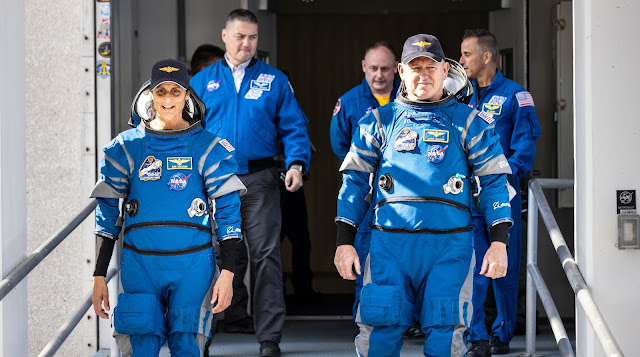China Completes Ignition Tests for Powerful Reusable Liquid-fueled Rocket Engine
China successfully completed an ignition test on Sunday, April 28, 2024, for its liquid-propellant engine with the highest thrust, according to the China Aerospace Science and Technology Corporation (CASC).
According to the China Aerospace Science and Technology Corporation (CASC), four YF-100K rocket engines have been successfully tested in parallel at the Tongchuan Test Center, Shaanxi Province, China. YF-100K is a “130-ton reusable liquid oxygen/kerosene rocket engine” that may be used by the Long March-10 launch vehicle. This marks a new breakthrough in the country's liquid propulsion development. It is also the first-ever parallel ignition test of four large-thrust liquid oxygen (LOX) kerosene engines. The 130-tonne class LOX kerosene engine, developed by the CASC, has a total thrust of over 500 tonnes.
Compared to the currently operational 120-tonne class LOX kerosene engines, it boasts not only a larger thrust and better performance, but also a more compact structure, effectively enhancing the rocket's carrying capacity.
"The successful test assessed the coordination of the multi-engine operation of our system, and the operating reliability of the engines in extreme thermal and force environment. [The result] indicates that the engines are fully qualified to participate in [rocket launching] tests," said Li Bin, deputy head of the Academy of Aerospace Liquid Propulsion Technology under CASC.
The engine used in this test was designed with the "pump back swing" technology, referring to an engine with a swing device at the rear. Compared with the main liquid oxygen kerosene engines currently in service, this kind of engine has a greater thrust, better performance, and a more compact structure.
With the pump back swing technology, more engines can be set within the same rocket diameter, which can effectively improve rocket carrying capacity.
"An engine with the pump back swing technology has a compact structure. For instance, we can place four engines within a diameter of 3.8 meters, and seven engines within a diameter of 5 meters," Li said.
The parallel ignition test refers to the integration of four mature engine systems, working in unison rather than simply being bundled together. This approach provides a larger thrust for the rocket while also reducing the overall complexity of the system.
The successful trial run validates the coordination of multiple engines and their reliability in high thermal environments, demonstrating that the engines are fully capable of flight applications.
After the test run, the engines will be delivered for rocket launching missions upon an engine check.
Video Credit: China Central Television (CCTV)/China Aerospace Science and Technology Corporation (CASC)
Duration: 1 minute, 26 seconds
Release Date: April 29, 2024
#NASA #Space #Earth #China #中国 #TongchuanTestCenter #铜川试验中心 #XianCity #ShaanxiProvince #YF100K #LongMarch10Rocket #长征十 #RocketEngine #Reusability #LOX #EngineTesting #CASC #Moon #月亮 #嫦娥 #Spaceflight #CASC #Science #SpaceTechnology #SpaceEngineering #STEM #Education #HD #Video
.jpg)









.jpg)


.jpg)

.jpg)
APoD.png)







